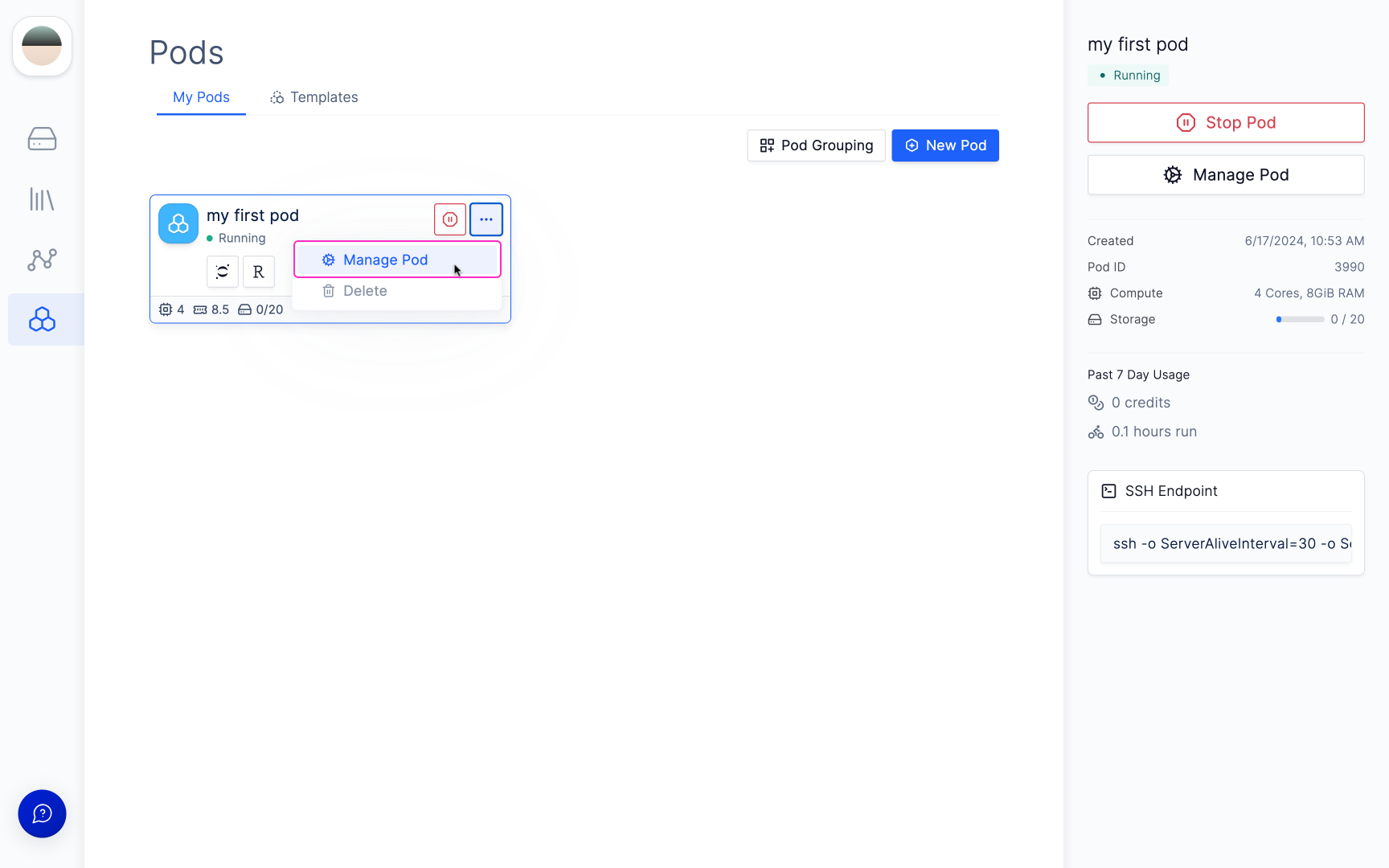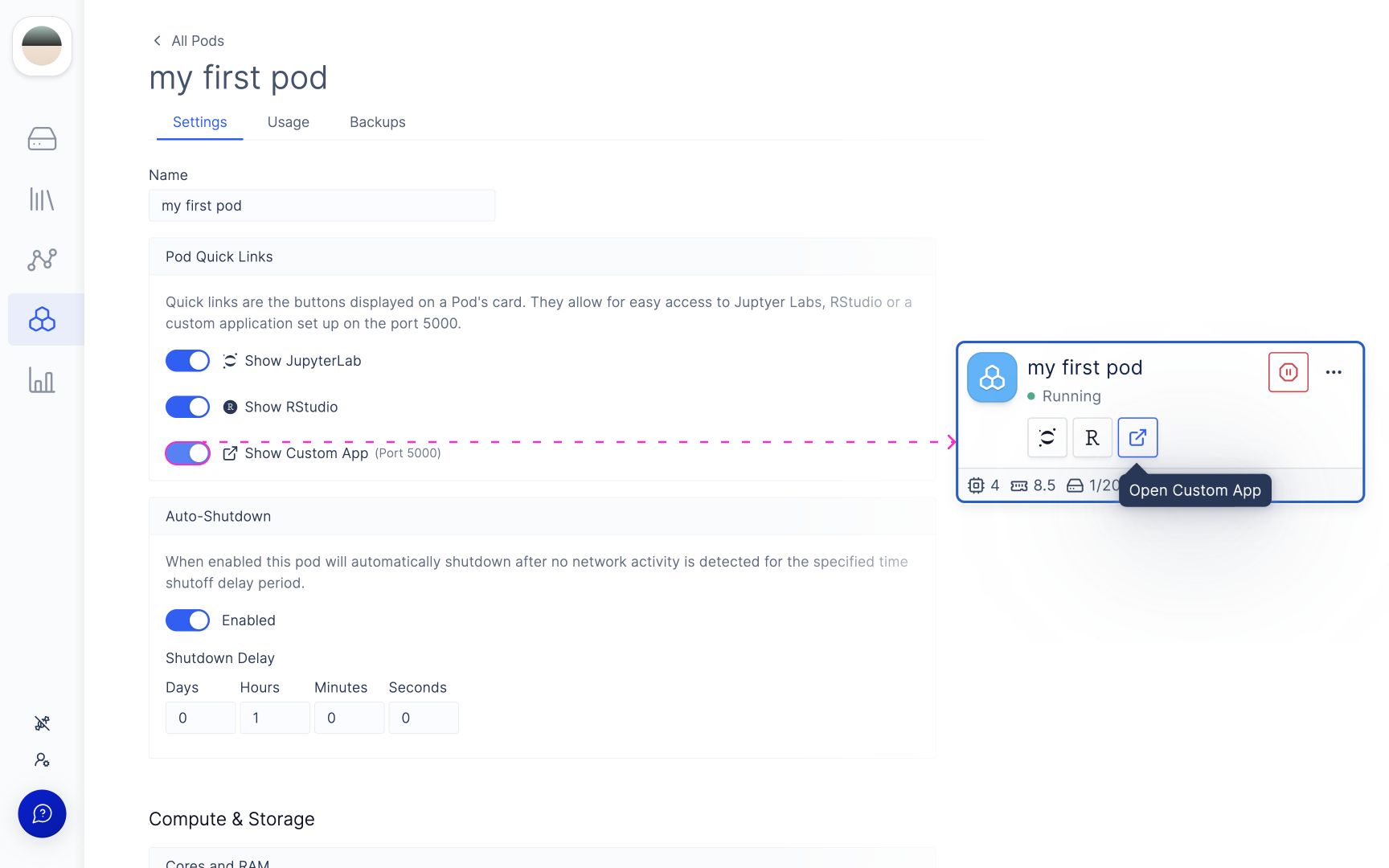Setting up your Custom App
In this guide, we will walk through step-by-step how you can set up your own custom application.1
Prepare your app.
Ensure your app is installed and configured according to its documentation.
2
Modify the startup script.
The startup script is located at
/opt/latch/custom_app. Make sure the app is on port 5000, and listens to 0.0.0.0 not localhost.- Here are a few examples of modifying the script in different languages.
-
ShinyApp
Replace “/root/” with the actual path to your Shiny app directory.
-
Streamlit
Replace “/root/app.py” with the actual path to your Streamlit app file.
-
Dash App
Where your Python script (
/root/app.py) contains:Replace “/root/app.py” with the actual path to your Dash app file.
-
ShinyApp
3
After you've set the app to the correct port and host, start your Custom App.
In the terminal, start the custom app service:The command will run the script under
/opt/latch/custom_app and start the application for the first time on the Pod.4
Enable the custom app service.
To make the app automatically start as the user starts the Pod the next time, enable the Latch custom app service:
5
Toggle on 'Show Custom App (Port 5000)'.
To verify if the Pod is running, navigate to the Pods page, and select Manage Pod go to Pod’s settings.



6
Open your App.
To see the app in action, stop and start your Pod, and click on the ‘Open Custom App’ button.
Advanced: Enabling the Application to Read from Latch Data
Latch Pods come with Latch Data FUSE (Filesystem in Userspace), which displays the entire filesystem on Latch Data on pods. LData FUSE is a file system that allows you to access Latch Data within Pods. LData is mounted automatically when starting a pod, and its content can be inspected under the directory /ldata.To access LData FUSE:
- Start a new Latch Pod.
- Navigate to the /ldata directory in your Pod.
- You will see the entire Latch Data filesystem mirrored in this directory.